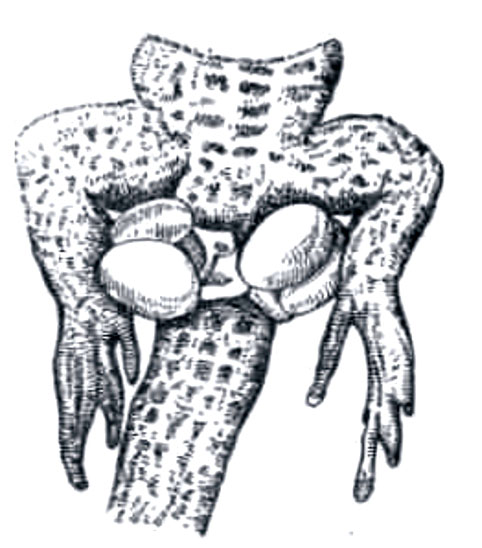Gene family: annexins; (ANX1 ANX2 ANX2P1 ANX2P2 ANX2P3 ANX3 ANX4 ANX5 ANX6 ANX7 ANX8 ANX11 ANX13)
|
COM |
Other names were proposed for annexins: lipocortins, calelectrins, calpactins, endonexins, calcimedins, placental anticoagulation proteins." |
|
SUM |
[1] Annexin or lipocortin family comprises genes encoding Ca-dependent
phospholipid-binding proteins with uncertain functions (except for ANX3,
1,2-cycloinositol phosphodiesterase) and a molecular weight of 35- or 67
kDa, and respective pseudogenes.
[2] The amino acid sequences of the members of the annexin family show that each protein contains conserved internal repeats of about 70 amino acids each. The 35 kDa annexins contain four repeats, which show a high degree of homology with each other and with the repeat sequences of the other proteins. These repeats correspond to structural domains with a similar fold (Weinman-1991). [3] The TNNC family belongs to the so named EF-hand homolog family which contains more than 160 different Ca(2+)-modulated proteins, i.e. calmodulin (see GEM:14q32/CALM1), troponin C (FAM:TNNC/00.0), myosin regulatory light chain (GEM:12q2/MYL2; GEM:04p163/MYL5), parvalbumin (GEM:22q1/PVALB), the S-100 proteins (FAM:S100A/01q21), calbindins 9 kDa (GEM:08q2/CALB1) and 28 kDa (GEM:0Xp222/CALB3) and others. The most striking feature of the EF-hand family is the ability to modulate the activity of a number of enzymes." |
|
FUN |
[1] The function of annexins is not definitely determined. These proteins,
binding phospholipids in the presence of Ca++ ions, are supposed to
participate in signal transmission, exocytosis, coagulation (as
inhibitors), immune response, as well as to inhibit some phospholipases
(e.g., phospholipase A2, GEM:12q2/PLA2G1B),
thus preventing the release
of arachidonic acid (which is necessary for synthesis of inflammation
mediators, prostaglandins and leucotriens) and weakening the inflammation
reactions.
[2] Annexin III possesses the enzymatic activity of 1,2-cycloinositol phosphate phosphodiesterase." |
|
REF |
COM,EVO "Burns AL &: PNAS, 86, N10, 3798-3802, 1989 COM,EVO "Grundmann U &: PNAS, 85, N11, 3708-3712, 1988 EVO,MOP "Weinman S: J Biol Buccale, 19, N1, 90-98, 1991 |
